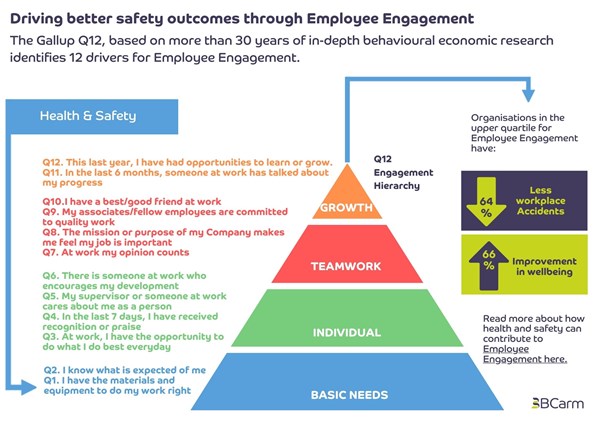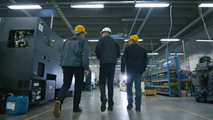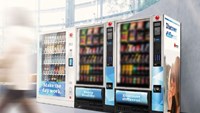Employee engagement is widely recognised as a significant business performance enhancer and an important contributor to improved safety performance. But what is Employee Engagement, and how can Health & Safety contribute towards it?
Watch this 2-minute explainer video on Employee Engagement and the Health and Safety Process |
|
Employee Engagement - How Health and Safety can contribute to it.
According to the Gallup Q12, which is based on more than 30 years of in-depth behavioural economic research involving more than 17 million employees, Employee Engagement has a significant impact on business performance as shown below.
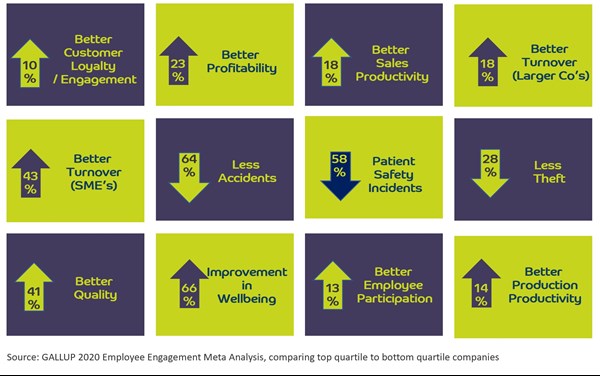
The Q12 are 12 drivers for Employee Engagement that Gallup has identified through this research that best predict Employee Engagement:
- I have the materials and equipment to do my work right
- I know what is expected of me
- At work, I have the opportunity to do what I do best everyday
- In the last 7 days, I have received recognition or praise
- My supervisor or someone at work cares about me as a person
- There is someone at work who encourages my development
- At work my opinion counts
- The mission or purpose of my Company makes me feel my job is important
- My associates/fellow employees are committed to quality work
- I have a best/good friend at work
- In the last 6 months, someone at work has talked about my progress
- In the last year, I have had opportunities to learn or grow.
The Q12 is also organised as a hierarchy as illustrated below
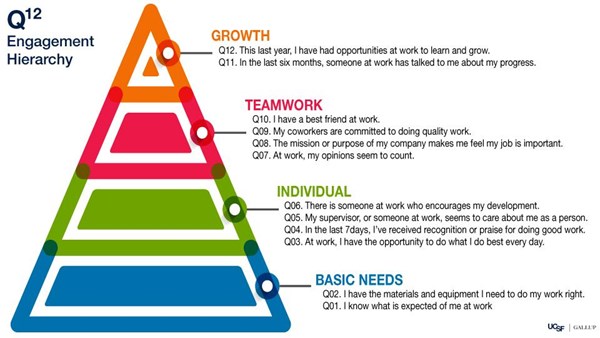
That Employee Engagement impacts on safety performance is not surprising as is shown above; Organisations in the upper quartile for Employee Engagement have 64% fewer workplace accidents than those in the bottom. But can Health and Safety impact on Employee Engagement?
Can Health and Safety support the development of Employee Engagement?
There is, of course, the obvious point that a strong safety culture is focused on the well-being and safety of its workforce, which says to the employees the company cares about us. It also feeds our basic human need for safety/security as defined in Maslow's Hierarchy of Needs.
But let's look specifically at 3 points.
Q01. I know what is expected of me
Safe Systems of Work, Method Statements, Safety Briefing and Toolbox Talks would all contribute to an employee’s sense of "I know what is expected of me", particularly if these are regular occurrences and not just a box-ticking exercise.
On the flip side, how does an employee feel when a safety talk is delivered as "I need to do this and you need to sign this"?
Q02. I have the materials and equipment to do my work right
Well maintained equipment, with adequate training and personal protective equipment, would certainly add to an employee's ability to do the job right. It is easy to relate to employee's frustration when the 'boss' doesn't provide the right resources, it raises the question, "Do they care about the business and if they don't, why should I?"
If you expand that further into the realms of personal protective equipment (PPE) and making sure employees understand the need for it and are made to wear it; if there is a lax approach, the PPE is ill-fitting and prevents the employee from working, then this could raise the question "does the boss care about me?"
Q05. My supervisor or someone at work cares about me as a person
A proactive safety culture where management at all levels has ownership of their respective element of the health and safety process and actively engages with their people will feed this driver and so would regular checks that employees have the right PPE, the provision of well-being support.
If the business uses an E-Learning system that also captures employee feedback, which the business then responds to, would again demonstrate care for the workforce.
There are 2 other Q12 drivers that can also link to Safety Management:
Q07. At work, my opinion counts
Businesses that actively consult with their employees over safety matters will feed this driver. It might not be a workplace council, it could be as simple as asking employees their input into the development of a Risk Assessment or a Safe System of Work.
Q09. My associates/fellow employees are committed to quality work
An environment where all employees understand their responsibilities for safety at work and play their respective parts will contribute to this driver. Equally, a working environment where some employees are dismissive of safety, this impacts on others, particularly if management doesn't address these issues.
So, in reality, there is a circular relationship between Employee Engagement and Health and Safety. Both can feed improvements into each other and then help drive wider business benefits.
More information on Employee Engagement and Health & Safety
If you'd like to look at how the above can become an automatic bi-product of your Health & Safety process and how BCarm Systems can support this, contact us.

